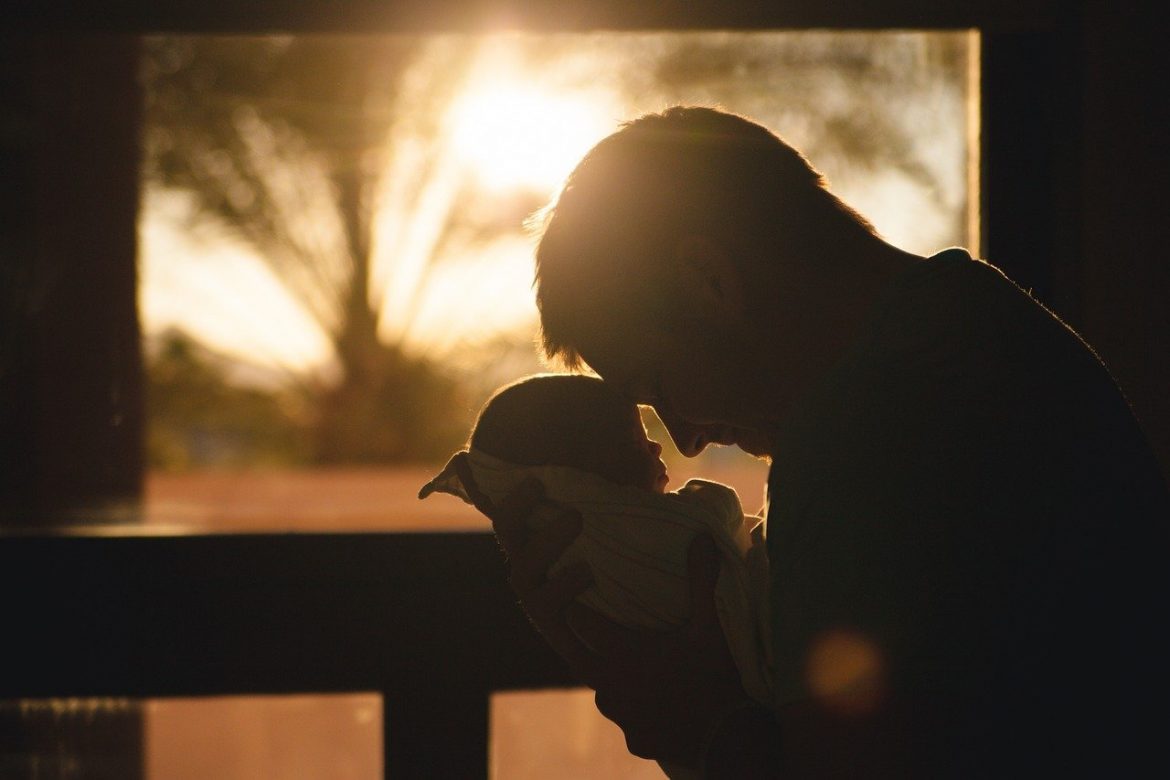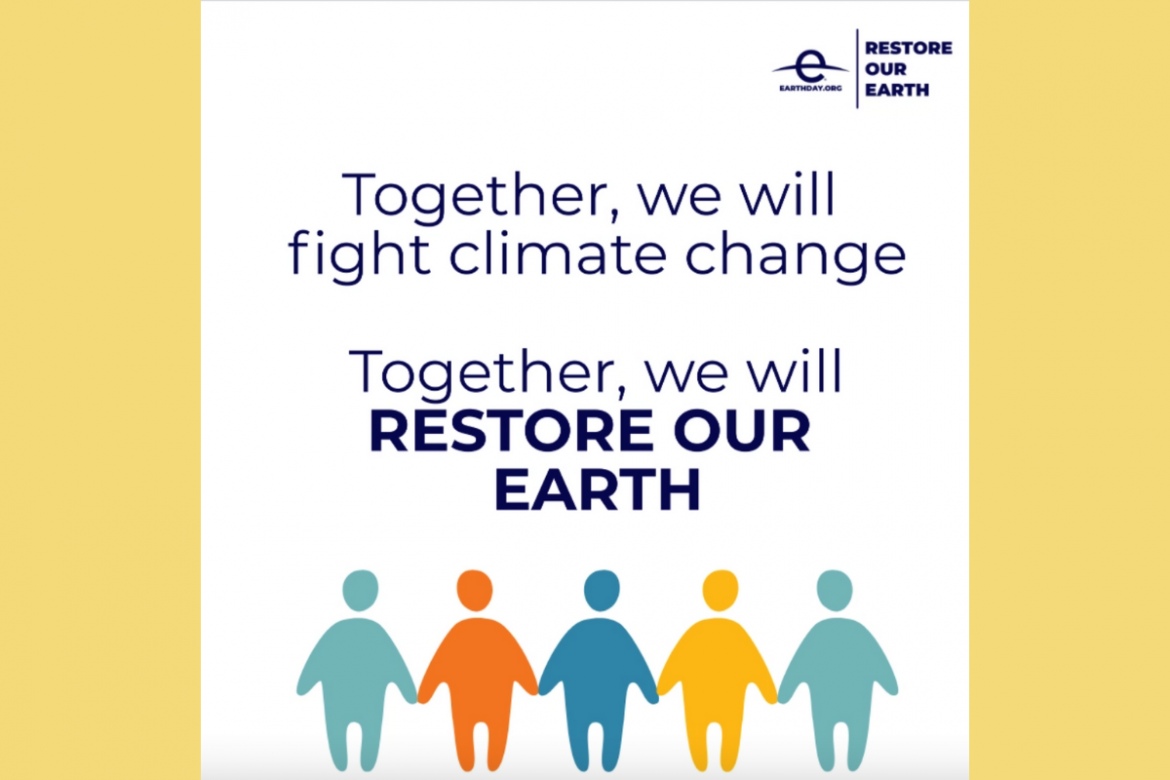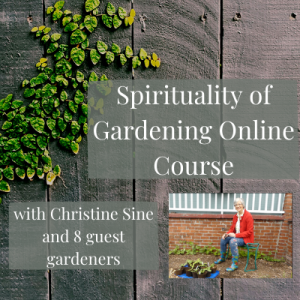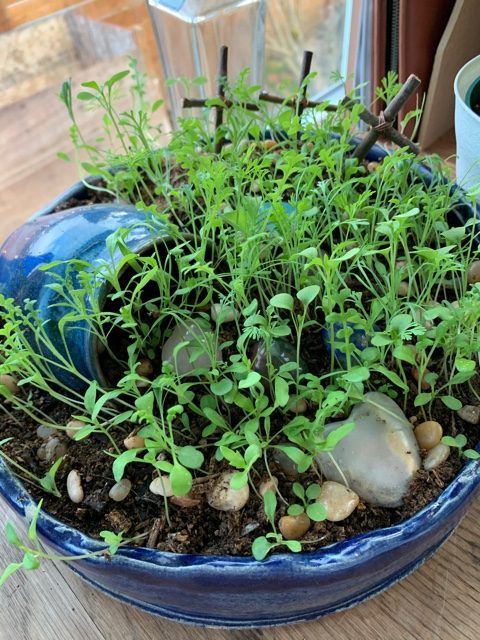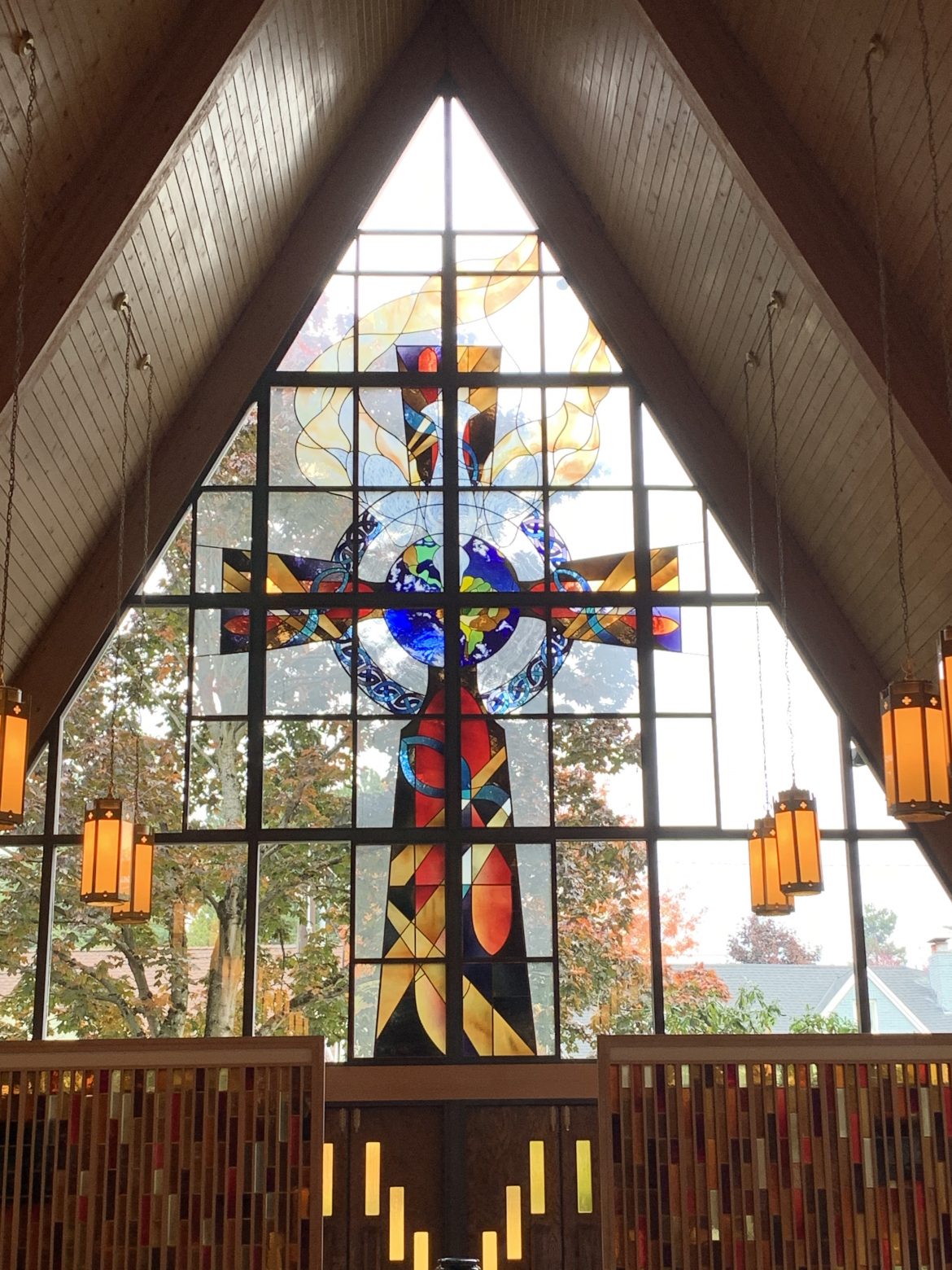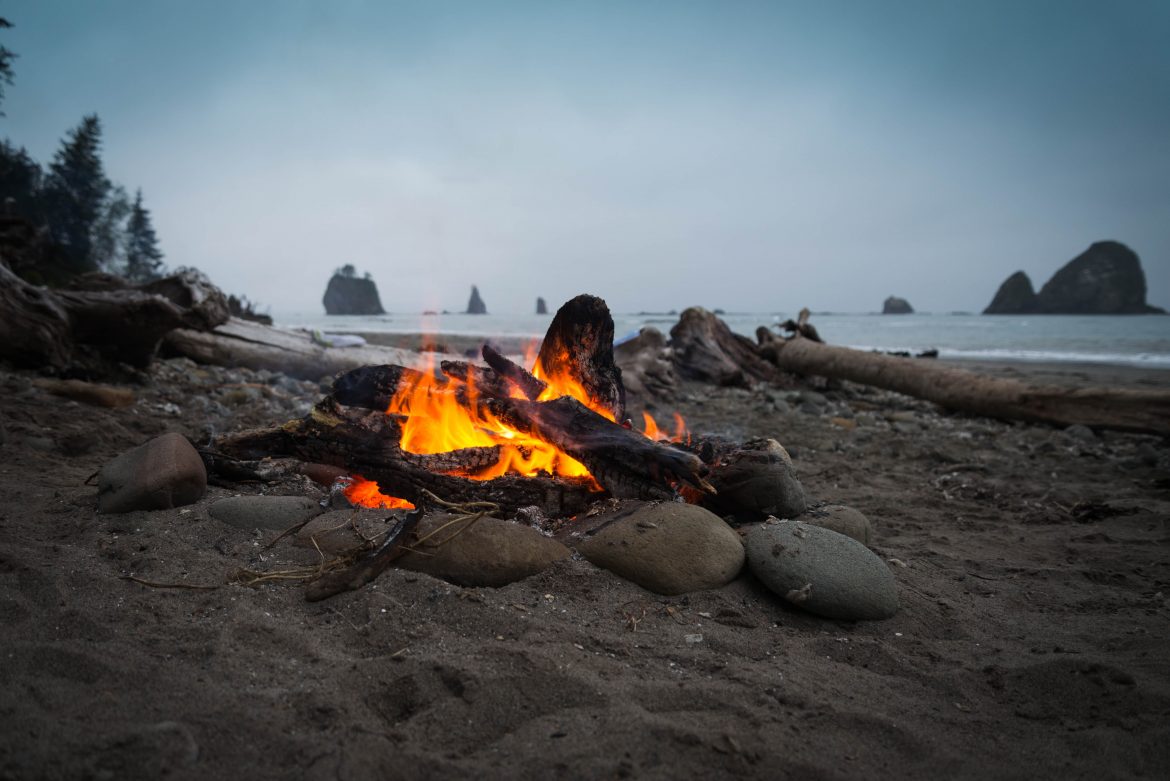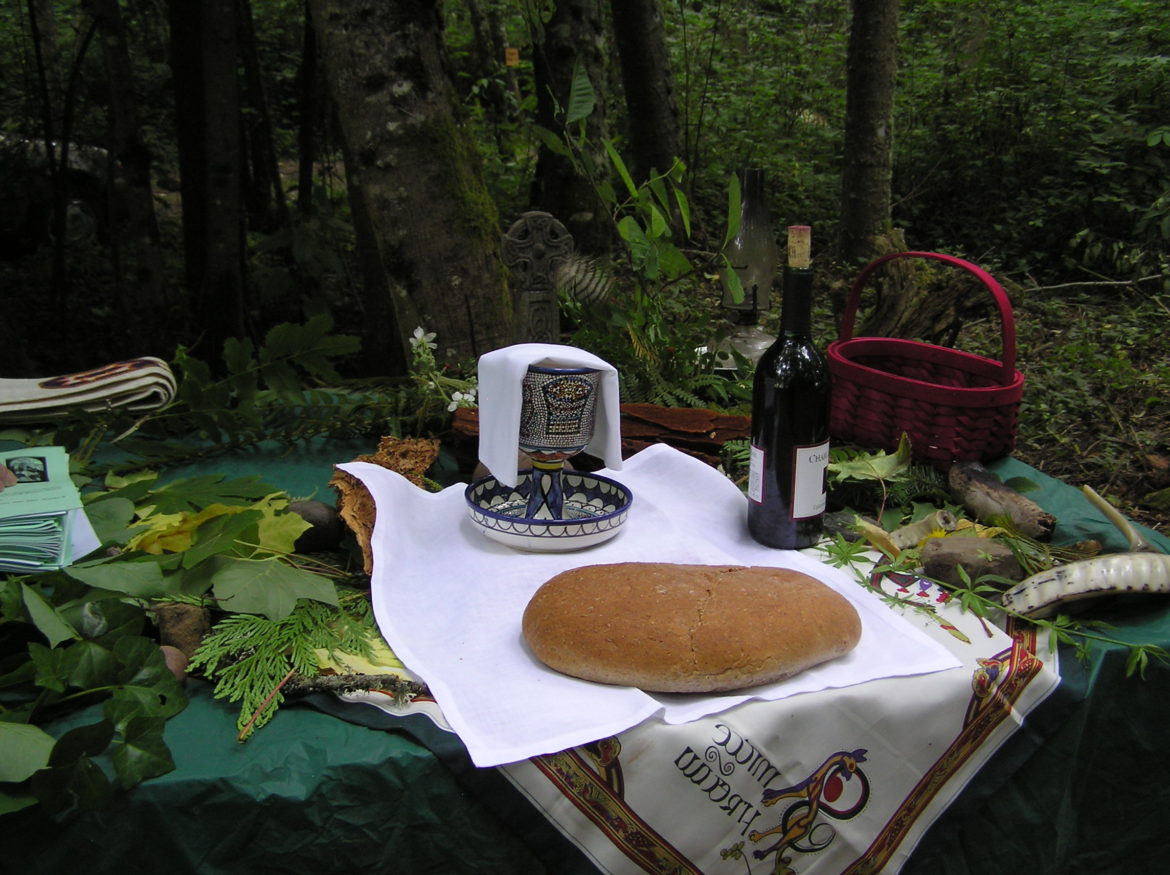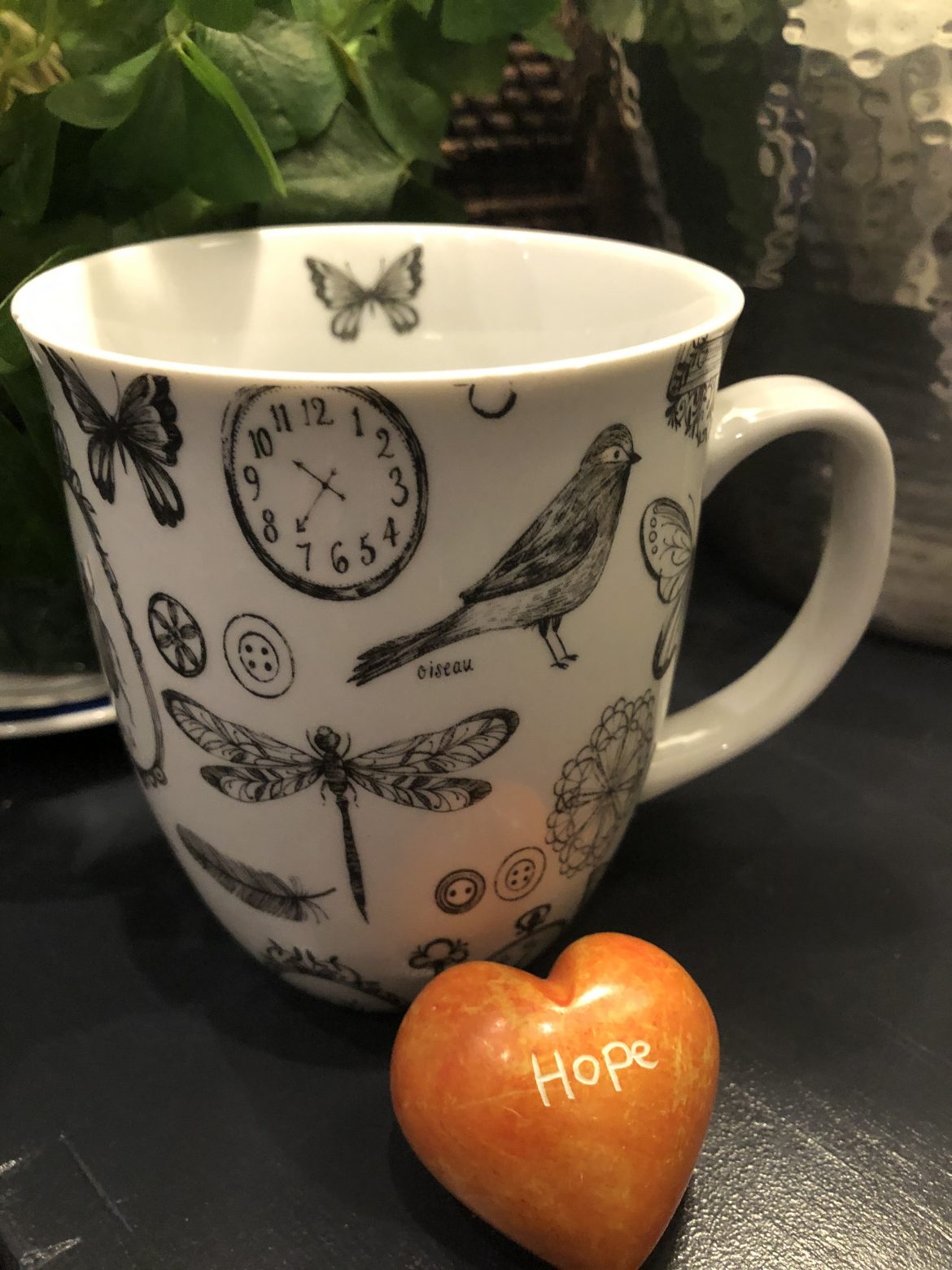Of all the songs I’ve written, I’ve had the most positive reaction and feedback to this one called , ‘Make time for love’, which has this to say:
You’re too busy, counting all the ripples in the sea,
Running round in circles needlessly,
Making all those plans so easily.
And you’re swimming,
floundering in a whirlpool all the time,
Racing like a fish to catch the line,
While the grains of sand are falling
in this hourglass of mine…
Make time for love, make time for love
You’re too busy, thinking that by rushing here and there,
Power’d by highest motives built on care,
That you’ll achieve perfection, climb the stairs.
And your children, all like buried treasure oh so rare,
One day soon will not be waiting there,
And the sand within the hourglass is descending through the air…
Make time for love,
make time for love.
There’s a hundred, a thousand things in life still to be done,
But all these things just can’t be done by ‘one’
So still the racing clouds… and see the sun,
Catch the blossom, now before it gently fades away.
Smell its perfume let it have its say,
Who have you neglected in your race of life today?
Make time for love, make time for love. :]
©1993 Sheila Hamil (used with permission)
My husband, Bob, who has a wonderful connection with his former pupils through Facebook, once read a post written by one of them, who worked as an engineer in the Merchant Navy, and was away for months at a time, while his young son was growing up without him there.
“It’s with a heavy heart that I’ve packed my bags,” this young man had written, “and am about to leave my lush little family again for three months. I’ve been with my son every day this leave, and it’s breaking my heart to leave him just before his first proper Christmas, however, his first Christmas would be canny s—t with now to open, so I’ve got to go and earn some money!”
Later on, the same person, Marc, wrote that he was trying to decide whether or not to accept yet another job, with a better salary at sea or apply for a land job.
So my husband wrote this message to him, and he attached a video of ‘Make time for love’:
Dear Marc,
‘I don’t usually do this kind of thing, but I thought this might be appropriate when making your job decision. My wife, who led a very busy life, wrote this song. Many of us see our own lives reflected in it. As you were saying you can’t get the years back. If you think I’m ‘out of order’ please ignore this message, all the best Bob.'”
And Marc wrote back,
Bob, I don’t know what to say, I’ve been moved to tears mate. Thank you, I’ve actually made my decision, it was one that was super easy to make. I missed almost all of my son’s baby life, and cannot repeat that in the toddling years. The first line of that song about counting waves… is so apt. As a sailor, I often sat on the deck, looking out to sea, thinking of home. Beautiful Bob, and very thoughtful.”
This exchange of words taught me a lesson, too, on hearing my husband describe my former lifestyle as ‘very busy’.
At one time, not only was I a wife and mother, and daughter to an elderly mother, but at the same time I was a teacher as well as being a non-stipendiary priest. I can honestly say I never paused for breath from morning until late at night.
Who was I neglecting in my own race of life? Was I catching the blossoms and enjoying the fragrance of my own family? Were many of my own priorities wrong? After all I reasoned, wasn’t I doing God’s work? Had I achieved a good balance between work and home? No, I hadn’t, and all the while the sands of time were being steadily poured out, and there was no gathering up of the grains.
I’m sure God was speaking directly to me, when I wrote down this song, particularly in the image of that chorus.
Many of us, especially in ministry, can get our priorities wrong, and casualties can be found strewn all around us through our neglect of family and friends.
I’ve heard of a priest whose children had abandoned faith, given what its demands had done to their parent. I knew another who ended up having to write the word ‘meeting’ in his diary each Thursday, to ensure time off with his family, away from demands of his congregation.
Life is surely about getting the balance right between work and rest.
Despite the many traumas and challenges of lockdown, despite the horrendous tragedies that have occurred this last year, I think we’ve also come to see that it has, without a doubt, been a positive time, too, with many heroic deeds being accomplished by the NHS and key workers, great acts of love and kindness being shown by strangers, and an increase of neighbourly communication.
For me, in our ‘enforced isolation’, it has not only been the most creative period of my entire life, in the videos I’ve been able to create, but also in the memoirs I’m writing about my life and faith journey, but more than these I have also discovered that my husband is my best friend.
And don’t we all now have a real craving for those tight cuddles we once enjoyed as parents, grandparents and friends?
It’s so important to make time for love, and seize every opportunity God sends us to love one another.
Thanks to StockSnap from Pixabay for the feature photo above.
New Bundle available now in our store which offers our best selling book, To Garden with God and The Gift of Wonder Prayer Cards.
This sale ends on May 11th! Makes a great Mother’s Day gift!
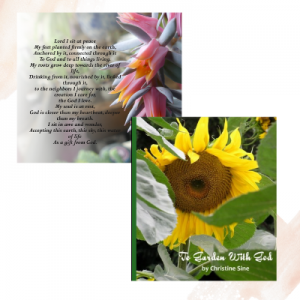
by Lisa DeRosa
What do you love most about Earth? Take a moment to think about this.
Is it the stillness of the morning sunrise? Or, the beauty of an evening sunset? The sound of a rushing river gliding over rocks? What about the soft, cool feeling of the soil as you dig a place for a seed or plant? Maybe the smell of freshly cut grass is your thing. Animals, fungi, or plants may fascinate you and those are your favorite things about Earth.
Did you find yourself thinking about the productivity of Earth and what it has to offer you? Or, more of its intrinsic value as a gift from God?
Whatever your thoughts, let it sink in for a moment that you are not on Earth by accident. Earth is where God decided to house people! Yahweh created planet Earth and saw that it was good! But our choices each day, the choices of humans since the garden of Eden have dictated that the good that was God’s Earth wasn’t good enough. We, in our own efforts, have tried to improve it, make it our own, take for granted its beauty, and made it into something it wasn’t supposed to be. Deforested, extinction, melting glaciers, depleted soil, harmful emissions…. These were not part of the plan or part of the original goodness.
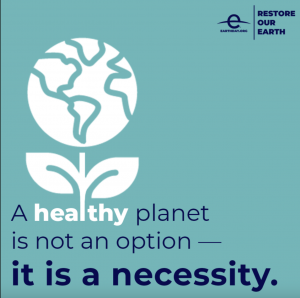
But I am hopeful that it’s not too late; that we are not too far gone, yet. We still have time to turn away from our current trajectory of devastation and towards loving the Earth. It is time.
The theme for Earth Day on April 22nd, 2021 is “Restore the Earth”. Events are happening all over the world (in person and online) with thousands of organizations that want to bring restoration to our planet. Will you join them? This year, 1 billion people are stepping up! There are so many ways to get involved.
How are you getting ready for Earth Day this year?
- If you need ideas, check out the official Earth Day website. Join their Three Days of Climate Action April 20 – 22. Are you planning an Earth day event? You can register it there as well as see other events happening on their world map! It’s exciting to see the innovative ideas and programs that others are doing across the globe. From whole town cleanups like in Rodeo, CA to a 6-hour Guided Game Walk near Pretoria, South Africa, there are lots of options!
- I personally listen to and love the Earthkeepers Podcast through Circlewood. This episode interviews the CEO of Ridwell which is an “innovative business thinking for community-based earthcare”. It caused me to pause and consider what I throw away and that there are alternative options to disposing of everyday items.
- Circlewood launches their blog/newsletter on Earth Day this year! Check out The Ecological Disciple for more insights and resources for Earth Day.
- Consider watching the documentary that Apple TV+ is sharing: “The Year Earth Changed” on April 16th.
- Join the EarthxFilm Festival April 16-25th either online or in person.
- Start a community garden! Use our free download to get started.
- Connect with God and the earth in a new way through the Spirituality of Gardening Online Course by Christine Sine.
- Be filled with awe and wonder as you watch “Disneynature: Wings of Life” narrated by Meryl Streep (available through Disney + or Amazon Prime Video)
What is your response?
If you need to, take a few additional moments to reflect on your view of Earth, God’s majestic creation. Ask God what your role will be for this coming celebration of Earth Day. You may be challenged to start something you’ve never done before, to join something you would not normally consider, or change one daily habit to help restore our Earth.
Creator God, we delight in the beauty of the Earth you gave us. Break our hearts for what breaks your heart when you see the destruction of your creation. Show us how to move forward in your Light and Love and how we can work together to renew
Blessings to you as you prepare for Earth Day 2021!
Faith-Based Eco Websites to Check Out
- Earth Day Sunday and Creation care services
- Creation Justice Ministries
- Faith Climate Action Week
- Interfaith Climate Prayer (English and Spanish)
- Eco-Justice Journey blog
- Unbound: An Interactive Journal on Christian Social Justice
- Godspace Creation Spirituality
Spirituality of Gardening Online Course makes a wonderful gift for this Spring season (or for a pick-me-up in Fall)!
by Christine Sine,
On Saturday, I transplanted some of the seedlings that have grown up around my Time to Love garden. “Unless a seed fall into the ground and dies…” I reflected on when I planted it, but today I realize there is much more to the story than that.
As you can see, the garden has become extremely crowded and they have even covered up the love stones I planted to mark the path from the cross to the tomb and out into the world.
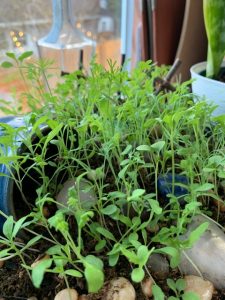
Overcrowded Easter garden
For the seedlings that have sprouted to produce their full harvest, they must be uprooted, transplanted and eventually replanted all around the garden. Maybe they will even take the love stones with them or need some new and bigger “love stones” around them. They cannot cling to the experience of crucifixion or even of resurrection and the empty tomb, they must be spread out into places where they have room to grow and the right environment in which to grow. They must also be tended with great care in that early stage until they are able to look after themselves and grow to their full glory.
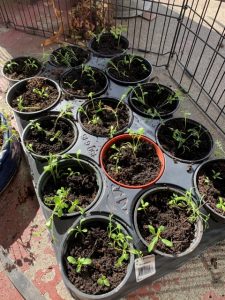
Transplanted seedlings
So on Saturday, I didn’t transplant them into their final positions in the garden, where their tender shoots could be destroyed by frost or bitter wind. Instead, I transplanted them into pots where I can tend and watch over them for the next couple of weeks. Then I will harden them up until they are ready to go into their final spot in the garden. At the same time, I will work on the soil to make sure that it is ready so that these new plants can thrive.
As I moved some of the plants I learned some important lessons too. Some of the seedlings looked great but as I tried to transplant them I realized they had no roots and would not survive no matter where I transplanted them too. Others seemed to have little growth but had lots of roots. They will thrive even though they seemed to be weak while they huddled round the tomb. Others where so enmeshed with other seedlings that they could never be separated out. They would never grow to their full potential, and with reluctance I nipped them out to allow the stronger plant room to grow. Last but not least I realized that there are still seedlings sprouting around the tomb and my thinning out and transplanting has allowed them time to grow.
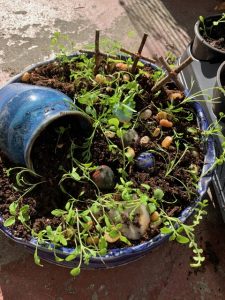
Uncluttered garden
How like the process that God wants to take us through, I thought. So many lessons to learn. We are planted by the empty tomb and rejoice in its power to give us life, and we want to bask in its glory. But if we stay there, we will die and those who may be taking root more slowly will never have a chance to grow. If we do not allow ourselves to be transplanted into new and uncrowded soil, we will not thrive either and the love that marked the path for us will be covered up.
So now that Easter Sunday is over, is it time for you to get ready to be transplanted and where do you think God is wanting to transplant you to? What is the final place in the garden of this world that you think God is preparing you for and how is the Creator of the universe preparing you, and the soil into which you will be planted, for that coming time of flourishing? Last, but maybe most importantly, how will you carry the love of God with you as you are planted out in the world?
These are the questions I have been asking myself this morning. I continue to work through a time of discernment, the exciting results of which I hope to share with you in a few weeks. All I can say now is that God is preparing me for a new stage of flourishing and hopefull,y a new harvest of tasty fruit.
I encourage you, too, to take time to think about where God might want to plant you in the future and how you might still need to prepare for that place of flourishing. I think that this last year in a COVID wilderness has begun the preparation, but there is still more to do. Maybe God is just transplanting us so that we can be fully prepared for what lies ahead.
As I thought about all of this today, I was reminded of this prayer that I wrote during Lent but never used. It is definitely God’s prayer for me today. Maybe it is God’s prayer for you too.
It’s time to reboot,
Not worn out thoughts
And practices that once seemed
To form the centre of my life,
But new ones,
that alter the very fabric of my being.
This wilderness living has not been easy,
It has parched our souls
And left us gasping
For the water of life.
Yet hidden in the cracks and seeming lifeless landscape,
Are seeds of beauty
Waiting to be born.
It’s time to reboot,
To move my eyes towards the light
Of a new day
And catch the brightness of its shining.
© Christine Sine 2021
The Easter season invites us not just to action but also to contemplation. I am so glad that these contemplative services from St Andrews Episcopal Church in Seattle will continue through this season.
A contemplative service with music in the style-of-Taize for the Second Sunday of Easter. Carrie Grace Littauer, prayer leader, with music by Kester Limner and Andy Myers.
Permission to podcast/stream the music in this service obtained from One License with license #A-710-756 with additional notes below:
“Jesus the Lord is Risen (Surrexit Dominus Vere II)” and “My Peace” – are songs from the ecumenical Taize community in France. Copyright and all rights reserved by GIA/Les Presses de Taizé
“Even in Sorrow” was composed by Kester Limner in March 2020 for the people of St. Andrew’s Episcopal Church in Seattle, shared under the Creative Commons License, Attribution (CC-BY).
“By the Mark” is written by Gillian Welch and David Rawlings.
Thank you for praying with us! www.saintandrewsseattle.org
by Tom Sine
Many Pastors Have Begun to Search for a New Normal
This has been a tough year for many pastors and their congregations. Many churches report that not only is Zoom attendance down but so is giving. However, some churches have created new ways to reach out to neighbors. For example, Saint Lukes Episcopal Church, here in Seattle, has reached out by inviting neighbors to use their community garden called SLUG… Saint Luke’s Urban Garden.
Pew Research just reported that a growing number of mainline churches are searching to find a new normal. Like many evangelical churches, many leaders are attempting to find ways to move back into their sanctuaries… with social distancing.
Church Members are Searching for a New Normal
I suspect that many of us who are church members are even more eager to find a new normal. I am sure many of us have suffered a tragic loss of loved ones and friends. Many of us know people who have lost their jobs or are in danger of losing their homes. Thankfully, growing numbers of us are getting vaccinated and looking forward to moving from isolation to having people over again.
One of the things that Christine, my partner, and I have missed the most is offering hospitality. We have both had our vaccine shots. Part to the new normal we are beginning to plan for early summer here in Seattle is hosting small groups of friends in our backyard for lunch with social distancing. What is the new normal you are looking forward to with family and friends? I suggest you start your retreat by defining some new normals for your lives. You might restore some practices, like hospitality, to enrich your life.
One Post-Easter Pathway to a New Normal… With a Difference
It looks like things could really begin to recover in the US this summer. What are some things that you would like to be a part of your new normal? What are some of the most realistic places to begin? Post-Easter, what are also some new ways to express your faith in turbulent times like these?
Christine and I are actually going on a post-Easter Retreat on the pacific coast. We will start with discerning what the new normal will look like for us recovering some of the old joys that we miss. We will also explore ways to sharpen our spiritual practices as well as how we seek to reach out to others in these troubled times.
We encourage all readers to plan a post-Easter retreat to begin to more clearly define: what you would like as the new normal in your daily life? What are also some new ways to update your spiritual practices as an immediate follow-up of the celebration of Easter 2021? For example, what are some:
- New daily practices you would like to try out in your spiritual life as a part of a new normal?
- What are also possible new practices you might consider to reach out to so many who are still suffering from both the pandemic and the continuing recession?
Consider Beginning your Post-Easter Retreat by Inviting Jesus to Join you for Breakfast
I suggest that you consider beginning your retreat, as Christine and I are, by inviting the risen Jesus to join for breakfast on our chosen retreat day. My favorite image of the risen Jesus in the 21st chapter of John. Here we see some of his surprised disciples coming back from fishing on Lake Tiberius. “Jesus said to them ‘bring some of the fish you have just caught.’ He added ‘come and have breakfast.’ (John 21:10-12).
I find myself, on this day after Easter Sunday, very drawn to this risen Jesus offering breakfast on the beach to his surprised disciples, I find I am very drawn to this Jesus that is so immediate and welcoming.
John reminds us, “When they had finished eating, Jesus said to Simon Peter… ‘do you truly love me more than these?’ ‘Yes, Lord’ he said, you know that I love you.’ Jesus said ‘feed my lambs.’” (John 21:15) Jesus repeated his clear message three more times to feed his sheep. (John 21: 15-17)
I also value his follow-up reminder to Peter that following this Jesus isn’t just about the Easter invitation to love the triune God more deeply. It is also an invitation to care more deeply for our neighbors as well.
Christine and I work at home as authors. I have found it easy to start the day, with our individual times of prayer and reflection. Then over breakfast, we take turns reading a Psalm and a gospel portion from the lectionary. We have found these practices have been very renewing during these very abnormal times. We also try to walk 2 miles each day in our neighborhood to enjoy the changing seasons, Christine calls these our “awe and wonder walks.”
If you don’t have any daily practices at this time, I recommend starting the day with some of the upbeat Psalms or begin reading through a gospel with prayer for your day.
In terms of reaching out to our neighbors in these troubled times, identify new needs where you life that stir your concern. I am increasingly concerned about the daunting challenges of our people who are just starting high school and college… particularly those from Black and Latino Communities.
Perhaps your church might consider starting a neighborhood garden project like Saint Lukes has done here in Seattle that we mentioned earlier.
We would love to learn what are new normals you are creating as all respond to the Easter call to join the risen Jesus on the beach for breakfast as our first step to create our own new normal in our lives in 2021.
Tom Sine, co-author with Dwight J. Friesen of 2020s Foresight: Three Vital Practices for Thriving in a Decade of Accelerating Change published by Fortress Press. Check it out on www.newchangemakers.com.
This article was adapted from the original post on the Episcopal Cafe. (Feature photo found here)
This is the second of a 2 part series on the instructed Eucharist. Today’s post starts with the creed that is said after the sermon – in the Episcopal church this is the Nicene creed.
The Nicene Creed
Following the sermon, we take a few moments of silence to let the words dwell with us. Then we recite
together the Nicene Creed, which was written in the fourth century to state the Church’s Trinitarian belief in God: Father, Son, and Holy Spirit. The Creed expresses the faith of the whole Church in all times and places.
Although the meaning of some of the phrases are not clear, think of the Creed as a prayer that you share with everyone today who is reciting this creed in their church. And think of it as a prayer you share with everyone who has gone before us who will recited this, and everyone who will come after us. The Creed is part of our communion with all Christians in all times and places.
Some people make the sign of the cross at the end of the creed to remind us that at our baptism we
were sealed with the sign of the cross and made Christ’s own forever. Such acts of reverence are ways in which we show outwardly what we believe inwardly.
The Prayers of the People
We now turn our attention to Christ’s Church and the world. Together, we pray for the Church, for
ourselves, and for the departed. The whole church, past and present, is united together in prayer. The names of persons who are in need of our prayers are added at this point, and there is usually an opportunity for us to speak out loud the names of people for whom we especially want to pray. During the pauses, you are invited to add your own petitions and thanksgivings either aloud or in your heart. These prayers are called “Prayers of the People” because they represent our deepest longings as God’s people at prayer.
The Confession & Absolution
I decided to include the prayer of confession and of absolution in this post after the following explanation.
Now we ask God’s forgiveness for the wrongs we have done individually and collectively as the people
of God. Confession is an important part of prayer whether we do it privately or in church with others. After
the confession is announced, there is a time of silence for private, silent individual confession. Then we recite together the words of confession. After we have made our confession, the Priest says the words of absolution, or forgiveness, assuring us that God has forgiven all of us.
Let us confess our sins against God and our neighbor.
Most merciful God, we confess that we have sinned against you in thought, word, and deed, by what we have done, and by what we have left undone. We have not loved you with our whole heart; we have not loved our neighbors as ourselves. We are truly sorry and we humbly repent. For the sake of your Son Jesus Christ, have mercy on us and forgive us; that we may delight in your will, and walk in your ways, to the glory of your Name. Amen.
Absolution
Almighty God have mercy on you, +forgive you all your sins through our Lord Jesus Christ, strengthen you in all goodness, and by the power of the Holy Spirit keep you in eternal life. Amen.
The Peace
This is the point in the service where we move from the Liturgy of the Word to Holy Communion.We
are first going to pass the peace—an ancient Christian practice suggested by St. Paul in 1 Corinthians 16:20.
Being at peace with each other is a Christian obligation. We are invited to be at “peace” not simply with
those around us, but also with all those we have encountered in the last week. We should use this opportunity to resolve to work harder to be at peace with those we find difficult. In addition, it is important to bring the peace of the Lord to all those in our past who hurt us. It is so easy for us to live with unresolved hurt: in the symbolism of touching the hands of others you are invited to release the pain and hurt that is part of the past. This moment of peacemaking comes immediately before the offertory (the moment when we give of ourselves to God). Jesus instructs us to make sure we are at peace with those around us before bringing our gifts to God (Matt. 5:23–24).
The peace of the Lord be always with you.
And also with you.
The Holy Communion
We now begin the second part of the Eucharist. There are four parts to this half of the service. The
first is our offering of money, food for the poor, and the bread and wine we will use at Communion. The
second part of the Eucharist is the prayer of thanksgiving and the consecration of the bread and the wine.
The third is the breaking of the bread. The fourth is the receiving of communion.
In the early days of the Church, worshippers brought their own bread and wine to the service. The
deacons chose what was needed for the consecration, and the rest was set aside for the poor. Today we have lay people who bring the bread and the wine to the altar. The bread and the wine, along with the money collected for the work of the church, are the offerings that will be presented to God.
The bread and wine are called “oblations”. Bread, wine and our gifts of money represent our lives, our
work, our recreation, our families and our community. In other words, we offer to God all that we have and
all that we do. This is called “stewardship”.
A deacon or priest “sets the table” by laying first a corporal, a white linen cloth, upon which are
placed a chalice, a cup for the wine, and a paten, a plate for the bread. The purpose of the corporal is to hold any crumbs which may come from the bread. Next, wine is poured into the chalice and a little water is added. Adding a little water to the wine was a sign of hospitality in the Middle East in the time of Jesus.
The Great Thanksgiving begins with the offertory sentence which reminds us that all our possessions
are really God’s gifts. The reason we take an offering of money in this part of the service, rather than at some other juncture, is because the fruit of our labor is a part of our Great Thanksgiving. And so we begin with an offertory sentence.
Offertory
Presentation Hymn
The Great Thanksgiving
The Priest now says the Great Thanksgiving. The prayers we use follow an ancient format from the
Second century. They are based on the accounts of the Last Supper primarily found in the Gospel of Luke and the letters of Paul.
We are doing two basic things in the Eucharistic prayer: We are remembering the ancient story, and
sharing in the blessing through the blessing of bread and wine. The prayer remembers the story of the people of God and makes it our own story; and we ask God’s blessing on us through the blessing of the bread and wine in our Communion.
In the Eucharistic prayer, we thank God for the many ways God is present in our lives and for the
many graces given to us. This leads us into a time of remembering—remembering God’s love for us,
remembering how we turned away from God, remembering that God came to us as Jesus Christ to share our
human nature so that we might be brought back to God. We remember Jesus’ last meal with his friends and
the words he spoke over the bread and the wine and we remember his death on the cross.
Once we have remembered the ancient story as our story, we offer our gifts of bread and wine as well
as ourselves and our lives to God. It is our offering that prepares us to invoke the presence of the Holy Spirit, asking that both the bread and wine and we ourselves be sanctified, that is, that we are made holy.
Although the priest says the words, this prayer is prayed by us all together. It is not some magic in the
priests hands that make this meal we share holy, it is our coming together as a family to affirm the thanking, remembering, offering and invoking with a resounding AMEN that makes our bread and wine, and us too, something more than before. Our prayer is completed when we recite together the Lord’s Prayer. In a very real way, the Holy Eucharist is a drama. Together we reenact the offering of Christ to make it real in our lives.
After this follows the part of the service known as the Great Thanksgiving and he Eucharistic prayer. To include these in this post would make it too long but you can find this prayer and in fact all the prayers of this service in The Book of Common Prayer.
The Invitation and Communion
The gifts we gave at the offertory, the bread and the wine, are now returned to us. Because God has accepted these gifts, they are changed. They are for us the Body and Blood of Christ: they become for us love, grace and strength.
(All who seek God and a deeper life in Christ are welcome to participate in Holy Communion. If you do not wish to receive the bread or wine, you are invited to come forward for a blessing. Please cross your arms over your chest to indicate to the priest that you would like a blessing. Gluten-free wafers are available; please make your need known to the minister.)
It is almost time for us to go, but we should not leave before we say together the prayer of thanksgiving. After this, the priest will give us God’s blessing.
Post Communion Prayer
Let us pray.
Loving God, we give you thanks for restoring us in your image and nourishing us with spiritual food in the Sacrament of Christ’s Body and Blood. Now send us forth a people, forgiven, healed, renewed; that we may proclaim your love to the world and continue in the risen life of Christ our Savior. Amen.
The Blessing
We now prepare to leave.
The procession leads us out into the world around us so that we may do the work that God has called us to do, wherever we may be: in our homes, in our schools, in our work and in our play. We have been fed with spiritual Food. God has given us the strength to live our lives as faithful followers of Christ.
We have concluded the Eucharist where we began, in the midst of life, in a world where there is suffering and need. But we are centered, as Christ was, in a life to be lived and shared. The Eucharist is the work of the people of God together. It is not a service confined to Sunday morning. Rather, it is a way of life. It is the essence of life itself.
This is followed by a closing hymn sung while those who have led us in the service process out of the church.
The Dismissal
Now is time for the dismissal. We are not allowed to linger; we are called to get back out into the
world and do the work we are given to do. Finally, the Deacon will send us forth to do the work that God has called us to do, and we all respond by saying with gusto: “Thanks be to God.”
THE DISMISSAL
Go in peace to love and serve the Lord.
Thanks be to God.
This instructed Eucharist originated from the Rev. Jenny Replogle who used the following resources for this instruction: Liturgical Life Principles by Ian Markham and these two websites – http://bookofcommonprayer.
NOTE: As an Amazon Associate I receive a small amount for purchases made through appropriate links. Thank you for supporting Godspace in this way.
By Lilly Lewin,
Long ago I found Joyce Rupp’s wonderful book The Cup of Our Life. I have used it for years in my own prayer time and it inspired me to create a way to pray through Holy Week using our coffee/ tea cups… Last Friday, we prayed with Jesus as he took the cup of suffering for each of us. On Easter Sunday, we drank from the CUP OF LOVE. The Living Water was poured out for us on Good Friday and NOW the CUP is refilled and overflows with that LIVING WATER that will never run dry! And that CUP overflows with abundant love!
We have entered into the season of Easter, or Eastertide. It’s a whole season of the Church calendar/church year so you haven’t missed Easter, we are just getting started! We get to experience the HOPE and LOVE of Easter and celebrate Resurrection for 50 days… until Pentecost Sunday (May 23rd this year!).
This gives me HOPE! This reminds me that I don’t have to feel badly if I haven’t experienced much Easter yet. Or if I’m still in shock and traumatized from the craziness of all that has been the Year of Covid, I can start to baby step towards the joy and hope of Easter. And if you work on a church staff, you may be exhausted from all the details of worship during Holy Week, and you might just need a long nap before starting to truly experience the joy of Easter for yourself!
Grab a coffee cup/tea cup. Maybe even find one to represent NEW LIFE and LIVING EASTER to you! I have this cup with the butterfly and other symbols on it that I’m using to remind me of Easter this year. It’s not a new cup, it has chips and flaws, just like me!
HOLD YOUR CUP
What is in your cup today? Talk to Jesus about this… it might be fatigue, frustration, sorrow, joy, peace or something else? Talk to Jesus about this, then Empty your cup of the things you don’t want or need today.
As you hold your cup, consider how you need Jesus to fill it during this Easter Season! What do you want/need Jesus to refill your cup with in the next few days? FILL YOUR CUP WITH SOMETHING TO DRINK AND allow Jesus to fill you up with His great love!
Have you been drinking from an Easter Cup this week?
Have you been tasting the HOPE of NEW LIFE AND RESURRECTION? As you drink from your cup today and this weekend, allow Jesus to fill you with HOPE each day.
The First CUP in our EASTER CUP Series is THE CUP OF HOPE.
Pick up your cup
Hold it
Consider what is bringing you Hope today.
Because of Easter, have new hope… like “Star Wars”. Hope, after so much loss and despair has now returned!
Jesus is no longer dead!
Death doesn’t get to win!
The Empire doesn’t get to win!
We can once again be people of Hope not despair!
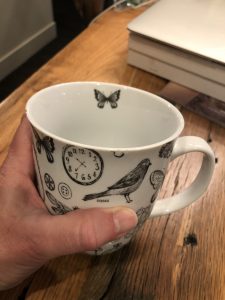
HOLD YOUR CUP
HOLD YOUR CUP
What is bringing you Hope today? Maybe even take time to make a list of all the things that are reminding you of HOPE and NEW LIFE so you can notice and remember. Keep the list going during the week and read it out loud next Friday to see all the beautiful, hopeful things that are happening in and around you!
As you drink from your cup today, consider all the things bringing Hope into your life, your world, your home.
If you are having trouble
Ask Jesus to show you .
As you fill your cup, let it be filled with HOPE!
Drink in the Hope of Resurrection
Drink from the Cup of Hope today, and everyday this week.
For me… Hope looks like the Birds in my front yard… and getting the vaccine.
For me the shot/needle/jab is
A sign
A gift
A cup of Hope that we can drink in today!
It’s a gift
Truly a miracle
Im so grateful.
The vaccine is a cup of Hope for me
And I am praying that more people will put away the cup of fear and take the vaccine:shot/jab/needle as an act of loving our neighbors and drinking in Hope!
Pick up your cup
Hold it
What is bringing you Hope today? Drink IN THE HOPE OF RESURRECTION and NEW LIFE!
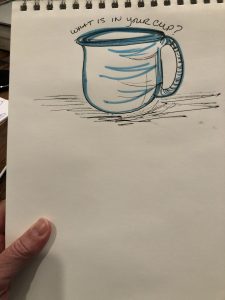
Make a List of Hopeful Things
As an Amazon Associate, I receive a small amount for purchases made through appropriate links.
Thank you for supporting Godspace in this way.
When referencing or quoting Godspace Light, please be sure to include the Author (Christine Sine unless otherwise noted), the Title of the article or resource, the Source link where appropriate, and ©Godspacelight.com. Thank you!

